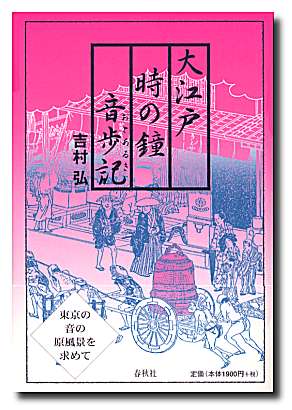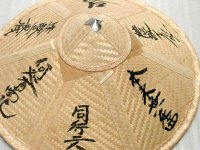::::::::::::::::::::::::::::::::::::::::::::::::::::::::::::::::::::::::::::::::::::::::::::::::::::::::::::::::::::::::::::::::::::::::::::::::::::::::::::::::::::::::::::::::::::::::::::::::::::::::::::::
- kaze no oto 風の音 the sound of wind -
voice of autumn (aki no koe 秋の声, shuusei 秋声)
"sound of autumn" (aki no oto 秋の音)
particularly at night: wind in trees, plants; patter of leaves, rain; insect cries; and so on
. WKD : Wind in various kigo (kaze 風) .

under construction
::::::::::::::::::::::::::::::::::::::::::::::::::::::::::::::::::::::::::::::::::::::::::::::::::::::::::::::::::::::::::::::::::::::::::::::::::::::::::::::::::::::::::::::::::::::::::::::::::::::::::::::
jinen, shizen 自然
quote
In Bashô’s writings, the same Chinese compound (read as shizen or ji’nen in Japanese) implies a meaning identical to its Chinese counterpart in Daoist discourse. Bashô’s use of the term in his early writings reflects a clear awareness of the literary significance of Daoist principles, and this awareness paved the way for his theoretical emphasis to “follow zôka and return to zôka” in his later years.
An early occurrence of ji’nen in Bashô’s writings is found in “Eulogy on a Kasen,” in which Bashô uses the term to praise a linked-verse sequence.
"The stormy wind from Pine Mountain in Iyo has blown upon the withered leaves of the Plantain Tree Hollow. Its sound sings poems. “Yeee!” The sounds of the tossing and trembling wind are like the jiggling of jade and the whistling of metals, sometimes strong and sometimes soft, bringing people to tears and touching man’s heart.
The meaning of each verse is distinct, as if ten thousand hollows are howling while each has a different sound—only such can be called an author of the piping of Heaven (tenrai) and spontaneity (ji’nen). The plantain leaves are torn, floating along the wind."
This eulogy is a response to a haikai sequence sent to Bashô by a poet from Matsuyama (Pine Mountain) in the Iyo area. “Plantain Tree Hollow” is one of Bashô’s literary names. The short prose piece strikes the reader with its unusual image and expressions, particularly the use of “the sounds of wind” as a metaphor for the superb quality of poetry and the juxtaposition of two kanji words, tenrai and ji’nen—“the piping of Heaven and spontaneity”—toward the end of the eulogy. But once we place this short quotation in the context of early Daoist sources, their implications are no longer ambiguous.
At the beginning of the second chapter of the Zhuangzi, “Discussion on Making All Things Equal,” we find very similar images and expressions in a dialogue between Nanguo Ziqi and Yancheng Ziyou:
Ziqi of South Wall sat leaning on his armrest, staring up at the sky and breathing—vacant and far away, as though he’d lost his companion. Yancheng Ziyou, who was standing by his side in attendance, said,
“What is this? Can you really make the body like a withered tree and the mind like dead ashes? The man leaning on the armrest now is not the one who leaned on it before!”
Ziqi said,
“You do well to ask the question, Yan[cheng]. Now I have lost myself. Do you understand that? You hear the piping of men, but you haven’t heard the piping of earth. Or if you’ve heard the piping of earth, you haven’t heard the piping of Heaven!”
Ziyou said,
“May I venture to ask what this means?”
Ziqi said,
“The Great Clod belches out breath and its name is wind. So long as it doesn’t come forth, nothing happens. But when it does, then ten thousand hollows begin crying wildly. Can’t you hear them, long drawn out? ... They roar like waves, whistle like arrows, screech, gasp, cry, wail, moan, and howl, those in the lead calling out yeee! Those behind calling out yuuu! In a gentle breeze they answer faintly, but in a full gale the chorus is gigantic. And when the fierce wind has passed on, then all the hollows are empty again. Have you never seen the tossing and trembling that goes on?”
Ziyou said,
“By the piping of earth, then you mean simply [the sound of] these hollows, and by the piping of man [the sound of] flutes and whistles. But may I ask about the piping of Heaven?”
Ziqi said,
“Blowing on the ten thousand things in a different way, so that each can be itself — all take what they want for themselves, but who does the sounding?”
source : Basho-and-the-Dao - Peipei-Qiu
::::::::::::::::::::::::::::::::::::::::::::::::::::::::::::::::::::::::::::::::::::::::::::::::::::::::::::::::::::::::::::::::::::::::::::::::::::::::::::::::::::::::::::::::::::::::::::::::::::::::::::::

source : ttetsuo_2005
冬枯れや世は一色に風の音
. fuyugare ya yo wa hito iro ni kaze no oto .
(attributed to Basho)
all the withered plants -
the sound of wind
in a world of one color
Tr. Gabi Greve
::::::::::::::::::::::::::::::::::::::::::::::::::::::::::::::::::::::::::::::::::::::::::::::::::::::::::::::::::::::::::::::::::::::::::::::::::::::::::::::::::::::::::::::::::::::::::::::::::::::::::::::
西か東かまづ早苗にも風の音
nishi ka higashi ka mazu sanae ni mo kaze no oto
from the west? from the east?
above all in the rice sprouts
the sound of the wind
Tr. Barnhill
from the east or west?
among the first rice-sprouts now
the sound of the wind
Tr. Chilcott
Written in the fourth lunar month of 1689. 元禄2年4月
At Shirakawa, on the trip
Oku no Hosomichi - - - - Station 10 - Shirakawa no Seki 白川の関 - - -
. Matsuo Basho 松尾芭蕉 - Archives of the WKD .
. WKD : The Four Directions "Tozai Nanboku 東西南北". .
::::::::::::::::::::::::::::::::::::::::::::::::::::::::::::::::::::::::::::::::::::::::::::::::::::::::::::::::::::::::::::::::::::::::::::::::::::::::::::::::::::::::::::::::::::::::::::::::::::::::::::::
秋来にけり耳を訪ねて枕の風
aki ki ni keri mimi o tazunete makura no kaze
autumn has come -
the wind has come to visit
my ear at the pillow
Written in 延宝5年, Basho age 34
This hokku is in the style of the Danrin school, with a personification of the autumn wind.
There is also a waka by Fujiwara no Toshiyuki 藤原敏行
秋来ぬと目にはさやかに見えねども
風の音にぞ驚かれぬる
aki kinu to me ni wa sayaka ni miene domo
kaze no oto nizo odorokaenuru
Autumn has come
Without realizing clearly
With eyes, however,
The sound of wind
Surprises us.
MORE about the pillow on the road
. Matsuo Basho 松尾芭蕉 - Archives of the WKD .
::::::::::::::::::::::::::::::::::::::::::::::::::::::::::::::::::::::::::::::::::::::::::::::::::::::::::::::::::::::::::::::::::::::::::::::::::::::::::::::::::::::::::::::::::::::::::::::::::::::::::::
. WKD : Wind in various kigo (kaze 風) .
. Cultural Keywords used by Basho .
. - KIGO used by Matsuo Basho 松尾芭蕉 - .
[ . BACK to DARUMA MUSEUM TOP . ]
[ . BACK to WORLDKIGO . TOP . ]
::::::::::::::::::::::::::::::::::::::::::::::::::::::::::::::::::::::::::::::::::::::::::::::::::::::::::::::::::::::::::::::::::::::::::::::::::::::::::::::::::::::::::::::::::::::::::::::::::::::::::::



















